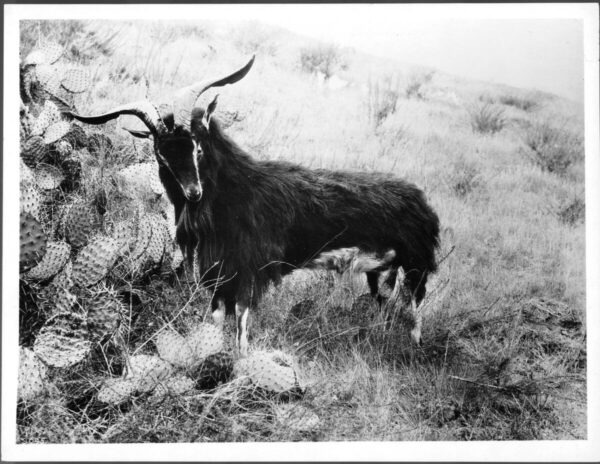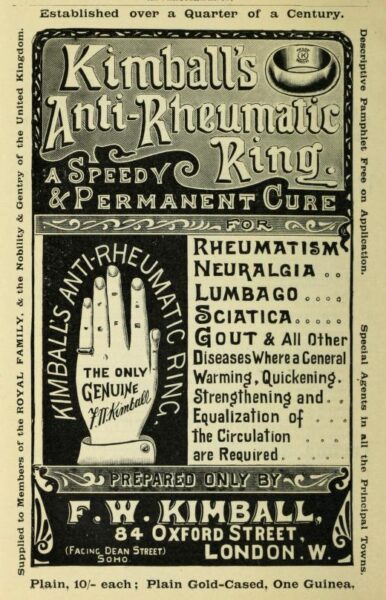
Originating in New York in the 1840s, Mrs. Winslow’s Soothing Syrup was a dangerous concoction. Parents often did not realise that it contained morphine, and sadly, as the American Medical Times put it in 1860, were “relieved of all further care of their infants” through its use.
chemist and get a bottle of MRS. WINSLOW’S SOOTHING SYRUP.
It will relieve the poor sufferer immediately. It is perfectly
harmless and pleasant to taste, it produces natural quiet sleep,
by relieving the child from pain, and the little cherub awakes “as
bright as a button.” It soothes the child, it softens the
gums, allays all pain, relieves wind, regulates the bowels,
and is the best known remedy for dysentery and diarrhoea,
whether arising from teething or other causes. Mrs. Winslow’s
Soothing Syrup is sold by Medicine dealers everywhere at 1s. 1½d.
per bottle. Manufactured in New York and at 498, Oxford-
street, London.




Yes, some of the cures from the 1800s were truly unique. I wonder what they did when the baby became addicted to morphine?
Hi Geri, thanks for your comment. Babies quite often did become addicted – then they’d get more fractious between doses, so the parents would give them more syrup to quieten them, and so on. I wouldn’t be surprised if the mothers took the occasional sip too!
My mother used to give me beer when I got cranky.
My husband found an old Mrs. Winslow bottle today (nearly perfect condition). He installs water services and digs up old bottles frequently. It seems that people just buried everything back then. I am shocked at how easy it was to locate information on this one. If anyone has more detailed information (date it was banned etc), please contact me at pinkerton1971@optonline.net. Thank you. Your site was very helpful.
What an interesting find, Stacie! This is one of the best-known patent remedies so there is a lot of stuff on the web about it. The product contained morphine up until the beginning of the 20th century (not sure when exactly, but pre-1912). After that the word “Soothing” was removed from the name and it continued to be sold without morphine. It still contained alcohol, potassium bromide, aniseed oil, and was 56.5% sugar!
Hi every1,
i think that the bottle must be neat looking from being that old. I bought an old book yesterday called uncle toms cabin it has no pictures but inside the back cover it has the advertisement and picture for the winslows advertisement its really old this book. and the advertisement. i was just trying to find out information. thank you 4 your time.
…Considering the medical age this morphine syrup was probably the only real relief from continual suffering some seriously ill children ever got!!!
Yes, I’m sure that was the case. Among the many reasons for people to choose a particular remedy, wanting to relieve a child’s suffering is a very understandable one.
I have many Mrs. Winslow’s soothing syrup and syrup bottles, so they are apparently common, but I cannot find any information on the unopened one I have acquired-originally from a pharmacy in savannah, ga. It is just syrup (not soothing) but the cork,some of the wax seal, the paper label and contents are intact. Any idea if this is as common as empty bottles or if it’s a little more rare? just curious-I like to have as much of the ‘story’ as possible behind my finds and cannot find info at all on this sealed bottle. Great website. Thank you.
Any idea when Curtis & Perkins sold to/became the AngloAmerican Medicine Co? I have a couple of bottles of Mrs Winslow’s with this embossing that I am trying to date: “MRS WINSLOW’S/SOOTHING SYRUP/THE ANGLO AMERICAN DRUG CO/SUCCESSORS TO/CURTIS&PERKINS/PROPRIETORS”
Thanks!
I recently found a reference to “Soothing Syrup” on ancestry.com. Apparently my grandmother had a daughter born May 1908 who died March 1909. The cause of death is listed as soothing syrup with the contributing cause as pneumonia!!!
Did most of the babies died after using the syrup? What happened to them when they grew up?